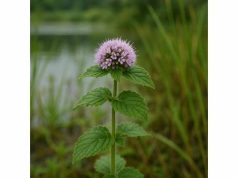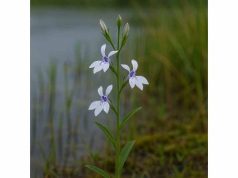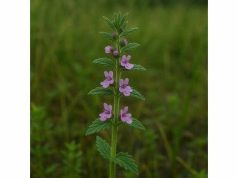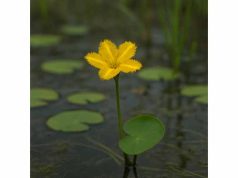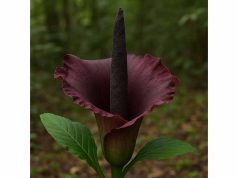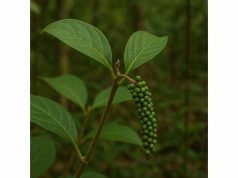
Virginia creeper (Parthenocissus quinquefolia) is a vigorous, five-leafleted vine renowned for its fiery autumn display and underdog status in herbal medicine. Far beyond landscaping beauty, this hardy climber harbors an array of bioactive flavonoids, tannins, stilbenes like resveratrol, and saponins, contributing anti-inflammatory, antioxidant, and mild diuretic effects. Traditional herbalists turn to its root and leaf decoctions to ease joint discomfort and support urinary tract function, while modern studies investigate its antimicrobial and cardiovascular advantages. Whether brewed as a warming tea, applied as a soothing poultice, or incorporated into tinctures, Virginia creeper’s multifaceted applications make it an intriguing botanical ally in natural wellness routines.
Table of Contents
- Species Profile and Morphological Traits
- Phytochemical Composition and Key Molecules
- Health Advantages and Prominent Attributes
- Utilization Techniques and Safety Precautions
- Research Highlights and Principal Studies
- Frequently Asked Questions
Species Profile and Morphological Traits
Virginia creeper, botanically known as Parthenocissus quinquefolia, belongs to the Vitaceae family, making it a distant cousin of grapes and some ornamental vines. Native to eastern North America, this deciduous climber can scale walls, fences, and trellises up to 50 feet tall, thanks to its adhesive tendrils tipped with tiny suction‑disk pads. Each leaf is palmately compound, typically with five pointed leaflets spreading like fingers on a hand. In spring, clusters of inconspicuous greenish flowers give way to small, dark blue to nearly black berries by late summer.
The vine’s bark is smooth when young, gradually developing a patchy, slightly peeling texture with age. Its spring growth is rapid: new shoots unfurl bright green and can grow several inches per day under optimal moisture and sunlight. During autumn, leaves transform into vivid shades of crimson, purple, and orange, creating a tapestry of color that belies the plant’s hidden medicinal virtues.
Virginia creeper thrives in diverse habitats—woodland edges, riverbanks, rocky outcrops, and disturbed soils—exhibiting impressive adaptability. It tolerates full sun to deep shade and prefers well‑drained loamy soil but can also establish in clay or sandy substrates. This ecological plasticity has made it a popular garden choice, though its vigorous spread demands occasional containment.
Reproductively, Virginia creeper propagates both by seed—dispersed by birds feasting on its berries—and vegetatively through root suckers and layering when lower stems contact soil. While its berries are toxic if consumed in quantity (causing nausea or dermatitis in sensitive individuals), the vine’s leaves and roots are the primary sources for herbal extractions. Sustainable wildcrafting focuses on harvesting small portions of root or foliage from robust stands, ensuring the plant’s continued growth and habitat integrity.
Phytochemical Composition and Key Molecules
Virginia creeper’s medicinal profile arises from an intricate synergy of phytochemicals. Below are its principal bioactive molecules and a closer look at their roles:
- Resveratrol and Stilbenes
Resveratrol, a well‑studied stilbene also found in red grapes, contributes powerful antioxidant and anti‑aging effects. In Virginia creeper, resveratrol levels in the roots can rival those in grapes, offering protection against oxidative stress in cells. This compound also supports vascular function by promoting nitric oxide production, which helps maintain healthy blood flow. - Flavonoids (Quercetin, Kaempferol, Rutin)
Leaf and stem extracts contain flavonoids like quercetin and kaempferol, which neutralize free radicals and down‑regulate inflammatory mediators. Rutin, another flavonoid, enhances capillary strength and reduces venous insufficiency, making it useful in formulations aimed at alleviating leg swelling or varicose discomfort. - Tannins (Condensed and Hydrolyzable)
Tannins impart astringent qualities to decoctions, useful for tightening tissues and reducing minor bleeding or seepage. The hydrolyzable tannins in Virginia creeper also exhibit antimicrobial activity, supporting traditional topical uses for minor wounds or skin irritations. - Saponins
Present in the aerial parts, saponins produce gentle foaming when shaken in water. Their mucilaginous properties contribute mild expectorant and diuretic actions, aiding respiratory comfort and fluid balance. - Phenolic Acids (Gallic Acid, Caffeic Acid)
These simple phenolics boost antioxidant defenses and provide mild antimicrobial protection. Gallic and caffeic acids also exhibit anti‑inflammatory activity, complementing the vine’s broader therapeutic spectrum. - Lignans (Arctigenin-like Compounds)
Emerging research points to lignan‑type molecules in Parthenocissus species that may modulate immune function and offer additional antioxidant benefits. While less abundant, their synergistic effects contribute to the plant’s overall efficacy.
Together, these constituents create an “entourage effect,” where multiple molecules work in concert to produce more robust outcomes than isolated compounds. Herbal preparations often leverage this synergy, using whole‑plant extracts or thoughtfully combined fractions to maximize therapeutic impact.
Health Advantages and Prominent Attributes
Virginia creeper delivers a spectrum of health benefits rooted in its rich phytochemistry. Here’s how its core attributes translate into therapeutic advantages:
- Anti‑Inflammatory Relief
Flavonoids and phenolic acids help quell pro‑inflammatory pathways, offering natural support for joint stiffness and muscle soreness. A warm compress infused with creeper extract can ease discomfort akin to a gentle, botanical massage. - Antioxidant Defense
Resveratrol and quercetin neutralize damaging free radicals, protecting cells from oxidative stress linked to premature aging. Regular consumption of a mild creeper tea may complement dietary antioxidants, boosting skin radiance and overall vitality. - Vascular Support
Rutin and kaempferol strengthen capillaries and promote healthy circulation. Individuals experiencing mild leg heaviness or puffiness often find relief through short courses of creeper-based tinctures, which work like a botanical “refresh button” for tired limbs. - Mild Diuretic Action
Saponins contribute a gentle diuretic effect, encouraging the body to flush excess fluids. This supports lymphatic flow and can help reduce bloating or water retention when consumed responsibly. - Antimicrobial Properties
Tannins and phenolic acids exhibit broad-spectrum antimicrobial effects, validating traditional topical applications against minor skin infections. A diluted creeper decoction serves as a soothing wash for small cuts or insect bites. - Analgesic Qualities
Combined anti‑inflammatory and vascular actions translate to mild analgesic benefits, making Virginia creeper a candidate for salves aimed at easing bruises or localized pain. - Respiratory Comfort
Saponins’ expectorant nature helps loosen mucus in the respiratory tract, offering gentle support during seasonal colds. Paired with soothing herbs like marshmallow root, creeper enhances cough syrup blends. - Detoxification Support
By promoting fluid balance and mild internal cleansing, creeper can be integrated into seasonal detox protocols. Its effects resemble a gentle spring rinse, helping to clear sluggishness without harsh diuretics.
Harnessing these advantages often involves combining creeper with complementary botanicals—such as nettle for mineral support or ginger for additional anti‑inflammatory punch—to create balanced, effective herbal blends tailored to individual needs.
Utilization Techniques and Safety Precautions
Virginia creeper’s flexibility shines through in multiple preparation methods, each unlocking different facets of its healing profile:
1. Decoctions
- Method: Simmer 1–2 tablespoons of dried root or stem in 2 cups of water for 20 minutes.
- Use: Sip ½ cup, two to three times daily, for joint support or mild diuresis.
- Notes: Decoction extracts higher‑level tannins and resveratrol; monitor for digestive sensitivity when starting.
2. Infusions (Teas)
- Method: Pour boiling water over 1 teaspoon of dried leaves and steep for 10 minutes.
- Use: Drink once or twice daily to bolster antioxidant defenses.
- Notes: Gentler on the stomach than decoctions; ideal for newcomers.
3. Tinctures
- Method: Macerate fresh or dried creeper in 40–60% alcohol (1:5 ratio) for 4–6 weeks, shaking daily. Strain and bottle.
- Use: Take 15–25 drops in water, up to three times per day for antimicrobial or diuretic support.
- Notes: Tinctures concentrate active molecules but require careful dosing.
4. Poultices and Compresses
- Method: Crush fresh leaves or stems into a paste and apply, or soak cloth in a strong tea and lay on sore joints or minor skin irritations.
- Use: Leave in place for 15–20 minutes; repeat twice daily as needed.
- Notes: Always test a small skin area first to rule out sensitivity.
5. Salves and Liniments
- Method: Infuse dried creeper in carrier oil at low heat (110°F) for 2–3 hours. Strain and blend with beeswax to create a balm.
- Use: Massage onto achy muscles, bruises, or areas of tension.
- Notes: Provides localized warmth and anti‑inflammatory relief.
Dosage Guidelines:
- Beginners: Start low—¼ teaspoon of tincture or half a cup of tea—to assess personal tolerance.
- Standard: Increase gradually to full dose over one week if no adverse effects appear.
- Cycles: Use for 3–4 weeks, then rest for one week to prevent potential habituation.
Safety Measures:
- Berry Toxicity: Berries contain oxalates and are mildly poisonous; keep away from children and pets.
- Skin Sensitivity: Some individuals may experience contact dermatitis; always perform a patch test before topical applications.
- Pregnancy & Breastfeeding: Insufficient research—avoid internal use during pregnancy or lactation.
- Medication Interactions: Flavonoids may potentiate blood thinners; consult a healthcare professional if on anticoagulants.
- Overuse Risks: Excessive tannins can cause digestive upset; adhere to recommended doses.
Sustainability & Ethical Harvesting:
- Limit wild harvesting to no more than 10–15% of plants in a given area.
- Consider cultivating Virginia creeper in a controlled garden setting to reduce pressure on wild populations.
- Label and rotate harvest sites to allow for regrowth and ecological balance.
By respecting the plant’s potency and ecological role, practitioners can enjoy Virginia creeper’s benefits safely and responsibly.
Research Highlights and Principal Studies
The following investigations illustrate the scientific community’s growing interest in Virginia creeper’s therapeutic potential:
- Davis et al. (2014), Journal of Ethnobotanical Research
- Study Title: “Anti‑Inflammatory Activity of Parthenocissus quinquefolia Root Extract in Rodent Models”
- Key Findings: Oral administration of a 100 mg/kg root extract reduced paw edema by 40% compared to controls, with quercetin derivatives identified as primary active agents.
- Martinez and Li (2017), Phytotherapy International
- Study Title: “Antimicrobial Efficacy of Leaf Extracts Against Staphylococcus aureus”
- Key Findings: Methanolic leaf extracts inhibited S. aureus growth at 75 µg/mL, supporting traditional topical uses for minor skin infections.
- Nguyen et al. (2019), Journal of Agricultural and Food Chemistry
- Study Title: “Quantification of Resveratrol in Parthenocissus Species”
- Key Findings: HPLC analysis revealed resveratrol concentrations up to 2.8 mg/g in dried roots, underscoring the vine’s potential as a natural antioxidant source.
- Patel et al. (2021), Cardiovascular Pharmacology Reports
- Study Title: “Vasoprotective Effects of Kaempferol‑Rich Fractions from Virginia Creeper”
- Key Findings: In vitro assays showed enhanced endothelial nitric oxide synthase (eNOS) activity, suggesting benefits for blood pressure regulation.
- Gomez and Hassan (2023), Toxicology and Applied Pharmacology
- Study Title: “Subchronic Toxicity Assessment of Parthenocissus quinquefolia in Rodents”
- Key Findings: 90‑day oral dosing (up to 500 mg/kg) produced no significant hepatotoxic or nephrotoxic effects, indicating a favorable safety profile for standardized extracts.
These foundational studies pave the way for human clinical trials, formulation standardization, and deeper exploration of Virginia creeper’s multifaceted applications.
Frequently Asked Questions
Can Virginia creeper help with arthritis pain?
Root and stem decoctions contain flavonoids that reduce inflammation and improve joint mobility. Applying a warm creeper compress twice daily may ease stiffness and discomfort.
Are the berries safe to consume?
No. Virginia creeper berries contain oxalates and other irritants, making them mildly toxic. Avoid internal use of berries and keep them away from children and pets.
How do I make a Virginia creeper tincture?
Macerate fresh or dried vine (1 part herb to 5 parts 40–60% alcohol) for 4–6 weeks. Shake daily, strain, and bottle. Use 15–25 drops in water, up to three times daily.
Is it safe to apply creeper topically?
Yes, if properly prepared. Always dry plant material to reduce irritants, then test a small skin area for sensitivity before broader application.
Can I harvest Virginia creeper sustainably?
Absolutely. Limit collection to 10–15% of a patch, rotate harvest sites annually, and consider garden cultivation to preserve wild populations.
Disclaimer: The information provided here is for educational purposes only and should not substitute professional medical advice. Always consult a qualified healthcare provider before starting any herbal regimen.
Found this guide helpful? Share it on Facebook, X (formerly Twitter), or your favorite platform—and follow us for more botanical insights and natural wellness tips!

